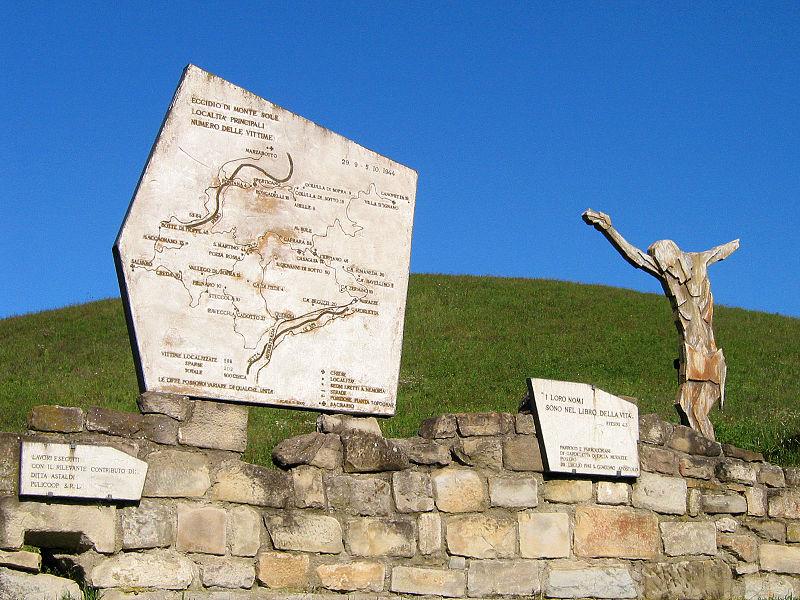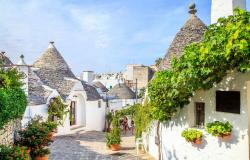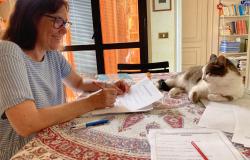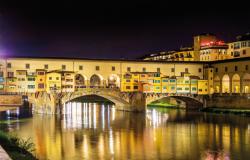Never Forget: The Marzabotto Massacre of World War II
ITA:

Use player to listen to Italian version
Italy's Liberation Day on April 25 is a national holiday commemorating the end of the fascist regime and of Nazi occupation of the country during World War II. It honors and remembers those who fought against the Nazis and Mussolini’s troops during the war, with parades and events organized all over Italy.
In Emilia-Romagna, the classic outing on April 25 is to the Historic Regional Park of Monte Sole, in the Apennine mountains south of Bologna, where the worst massacre of civilians by Nazi troops during the war took place.
During World War II, the area where the park is located today was strategically important because it allowed control of the surrounding valleys and of the main communication routes. As the Allied troops advanced, conquering part of the territory, the German troops withdrew their defensive line to the slopes of the massif known as Monte Sole. Today, as you walk in the park, you can still make out trenches, large holes and caves used as shelter during air raids.
On 29 September 1944, German troops aided by a group of Fascists, began an encirclement maneuver, climbing to the top of Monte Sole, with the goal to defeat the partisans and punish the local population, accused of helping the ‘rebels’. The operation lasted seven days. After a long and strenuous defense, the surviving partisans retreated to the woods and peaks to escape arrest and break the siege, convinced the Germans would not act cruelly against women, children and the elderly. They were wrong.
The residents who were left gathered in the local churches, public spaces, homes and anti-raid shelters. The Germans used bombs and flame-throwers to set everything on fire and to drive out civilians and partisans. They shot and burned, everything and everyone, no matter the age or sex.
At the end of the Marzabotto massacre, as it is known by the name of the main town in the area, there were at least 770 victims (189 were less than 12 years old). The few who survived were forced to abandon the area, which was never again repopulated. A ‘historic’ park, the only one in the region, was established in 1989.
An itinerary on foot, known as Memoriale, connects the main places of the massacre, including the remains of the cemetery of Casaglia, where 70 people were executed (you can still see the bullet holes).
At the top of Monte Sole, a memorial stone was erected in 1953 to remember the fallen of the Brigata Stella Rossa, the local partisan group, who fought against Nasi-fascist forces in the area from November 1943.
Il 25 aprile in Italia è la festa nazionale della Liberazione che celebra la fine del regime fascista e l'occupazione nazista del paese durante la seconda guerra mondiale. La festa onora e ricorda coloro che hanno combattuto i nazisti e le truppe di Mussolini durante la guerra, con parate ed eventi organizzati in tutta Italia.
In Emilia-Romagna, la classica escursione del 25 aprile si svolge nel Parco Storico Regionale di Monte Sole, nell’Appennino a sud di Bologna, dove si è verificato il peggiore massacro di civili da parte delle truppe naziste durante la guerra.
Durante la seconda guerra mondiale, l'area dove oggi si trova il parco era strategicamente importante perché consentiva il controllo delle valli circostanti e delle principali vie di comunicazione. Mentre le truppe alleate avanzavano, conquistando parte del territorio, le truppe tedesche arretrarono la propria linea difensiva verso le pendici di Monte Sole. Oggi, camminando nel parco, si possono ancora intuire trincee, grandi buche e grotte usate come rifugio durante le incursioni aeree.
Il 29 settembre 1944, le truppe tedesche, coadiuvate da un gruppo di fascisti, iniziarono una manovra di accerchiamento, salendo sulla cima di Monte Sole, con l'obiettivo di sconfiggere i partigiani e punire la popolazione locale, accusata di aiutare i “ribelli”. L'operazione durò sette giorni. Dopo una lunga e faticosa difesa, i partigiani sopravvissuti si ritirarono nei boschi e sulle vette per sfuggire all'arresto e spezzare l’accerchiamento, convinti che i tedeschi non avrebbero agito crudelmente contro donne, bambini e anziani. Si sbagliavano.
Gli abitanti rimasti si radunarono nelle chiese locali, nei luoghi pubblici, nelle case e nei rifugi antiaerei. I tedeschi usarono bombe e lanciafiamme per incendiare tutto e snidare civili e partigiani. Fucilarono e bruciarono, tutto e tutti, senza distinzione di età o sesso.
Alla fine del ‘massacro di Marzabotto’, come è noto dal nome della città principale della zona, vi furono almeno 770 vittime (189 avevano meno di 12 anni). I pochi sopravvissuti furono costretti ad abbandonare l'area, che non fu mai più ripopolata. Un parco 'storico', l'unico nella regione, fu istituito nel 1989.
Un itinerario a piedi, noto come Memoriale, collega i principali luoghi della strage, tra cui i resti del cimitero di Casaglia, dove furono giustiziate 70 persone (si possono ancora vedere i fori dei proiettili).
In cima a Monte Sole, nel 1953 fu eretto un cippo in pietra per ricordare i caduti della Brigata Stella Rossa, il gruppo partigiano locale, che combatté contro le forze nazifasciste nella zona dal novembre 1943.











